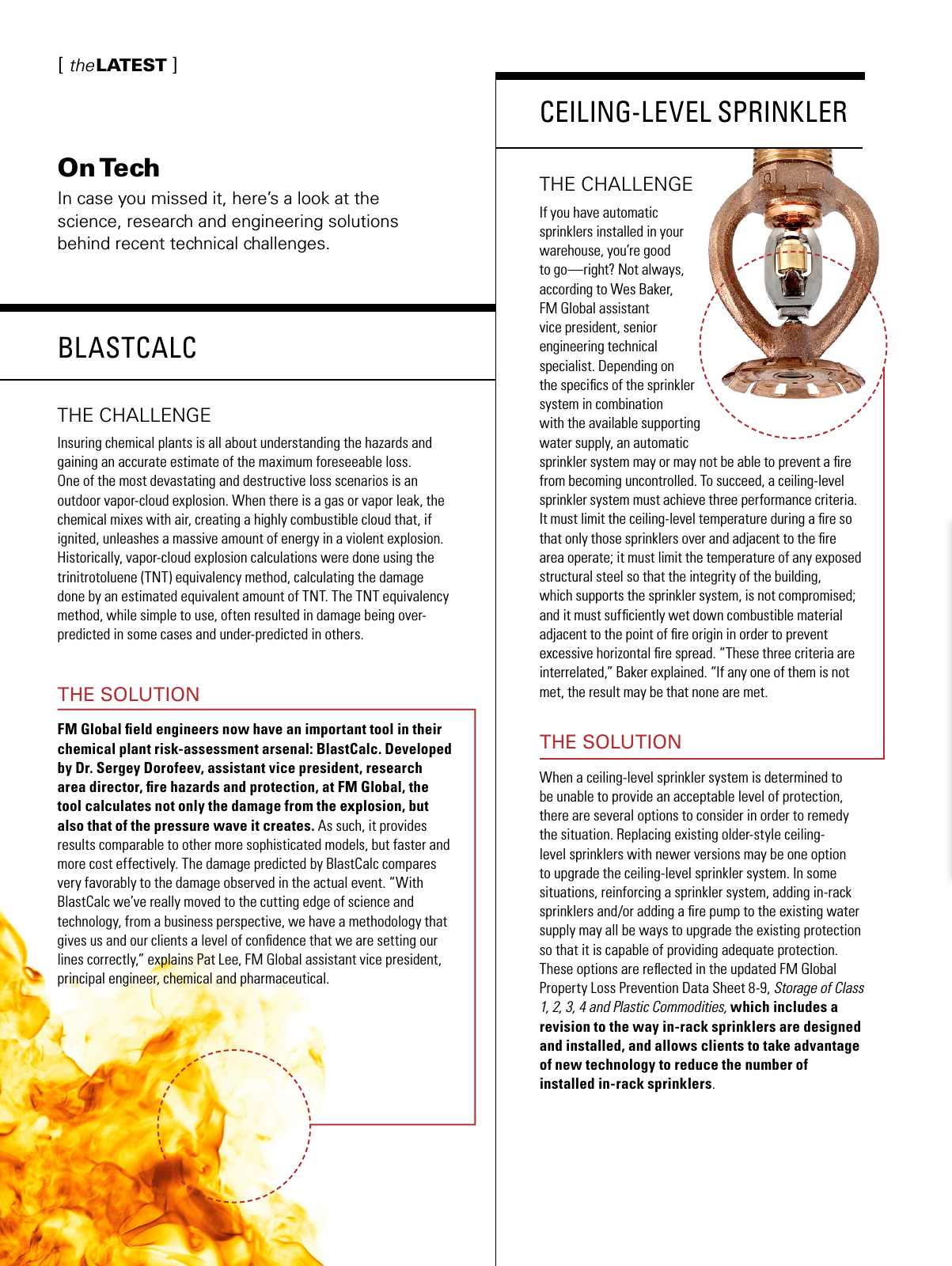Reason Magazine 2014 Quartal 2 Seite 18
Hinweis: Dies ist eine maschinenlesbare No-Flash Ansicht.Klicken Sie hier um zur Online-Version zu gelangen.
Inhalt
On Tech In case you missed it here s a look at the science research and engineering solutions behind recent technical challenges THE CHALLENGE Insuring chemical plants is all about understanding the hazards and gaining an accurate estimate of the maximum foreseeable loss One of the most devastating and destructive loss scenarios is an outdoor vapor cloud explosion When there is a gas or vapor leak the chemical mixes with air creating a highly combustible cloud that if ignited unleashes a massive amount of energy in a violent explosion Historically vapor cloud explosion calculations were done using the trinitrotoluene TNT equivalency method calculating the damage done by an estimated equivalent amount of TNT The TNT equivalency method while simple to use often resulted in damage being over predicted in some cases and under predicted in others THE SOLUTION FM Global field engineers now have an important tool in their chemical plant risk assessment arsenal BlastCalc Developed by Dr Sergey Dorofeev assistant vice president research area director fire hazards and protection at FM Global the tool calculates not only the damage from the explosion but also that of the pressure wave it creates As such it provides results comparable to other more sophisticated models but faster and more cost effectively The damage predicted by BlastCalc compares very favorably to the damage observed in the actual event With BlastCalc we ve really moved to the cutting edge of science and technology from a business perspective we have a methodology that gives us and our clients a level of confidence that we are setting our lines correctly explains Pat Lee FM Global assistant vice president principal engineer chemical and pharmaceutical BLASTCALC THE CHALLENGE If you have automatic sprinklers installed in your warehouse you re good to go right Not always according to Wes Baker FM Global assistant vice president senior engineering technical specialist Depending on the specifics of the sprinkler system in combination with the available supporting water supply an automatic sprinkler system may or may not be able to prevent a fire from becoming uncontrolled To succeed a ceiling level sprinkler system must achieve three performance criteria It must limit the ceiling level temperature during a fire so that only those sprinklers over and adjacent to the fire area operate it must limit the temperature of any exposed structural steel so that the integrity of the building which supports the sprinkler system is not compromised and it must sufficiently wet down combustible material adjacent to the point of fire origin in order to prevent excessive horizontal fire spread These three criteria are interrelated Baker explained If any one of them is not met the result may be that none are met THE SOLUTION When a ceiling level sprinkler system is determined to be unable to provide an acceptable level of protection there are several options to consider in order to remedy the situation Replacing existing older style ceiling level sprinklers with newer versions may be one option to upgrade the ceiling level sprinkler system In some situations reinforcing a sprinkler system adding in rack sprinklers and or adding a fire pump to the existing water supply may all be ways to upgrade the existing protection so that it is capable of providing adequate protection These options are reflected in the updated FM Global Property Loss Prevention Data Sheet 8 9 Storage of Class 1 2 3 4 and Plastic Commodities which includes a revision to the way in rack sprinklers are designed and installed and allows clients to take advantage of new technology to reduce the number of installed in rack sprinklers CEILING LEVEL SPRINKLER theLATEST
